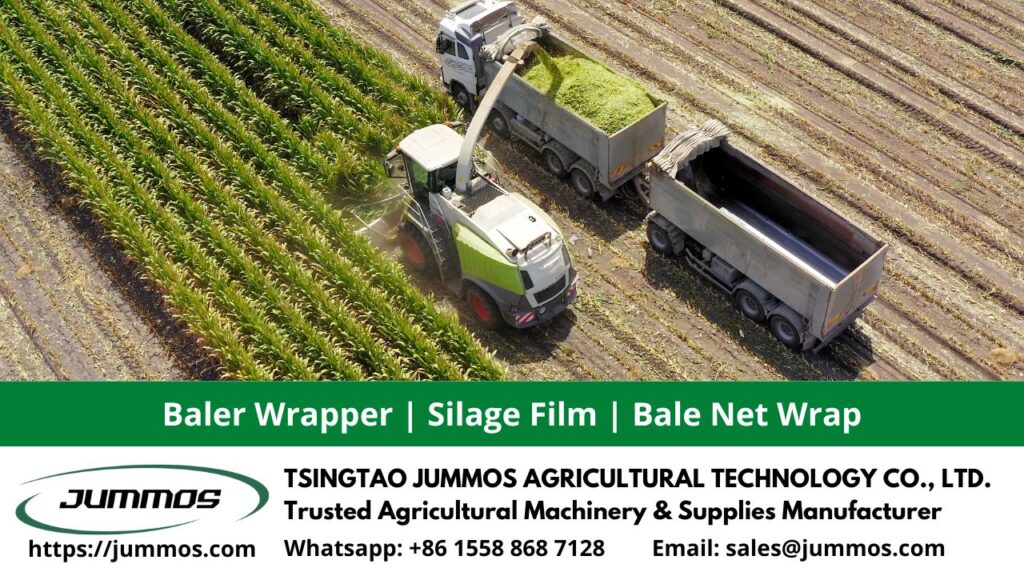Corn is one of the most important food crops in the world. Its grains can be processed into various foods, and its stalks and leaves can also be utilized as high-quality animal feed, known as corn silage. Let’s explore more about this high-quality feed for dairy cows in the following article.
Contents
What is Corn Silage?
Corn silage is an animal feed made through the fermentation of the corn plant. This anaerobic fermentation involves cutting and compacting corn stalks, cobs, and leaves. The fermentation process produces lactic acid, which helps preserve the feed and enhances its nutritional value. Corn silage is one of the most commonly used types of silage due to its high energy content and good palatability.
Benefits of Corn Silage
This high-quality fermented feed, derived from the corn plant, offers numerous benefits for dairy cows and other ruminants. It increases milk production, provides economic and environmental benefits, and supports farmers. Here are some of its advantages:
Increases Milk Production
The high energy content, primarily from carbohydrates, serves as the main energy source for dairy cows and other ruminants, aiding in milk production and quality. The protein in silage also supports the growth and development of body tissues, including the mammary glands. Additionally, lactic acid in silage improves digestion and nutrient absorption, making more nutrients available for milk production.
Improves Livestock Health
This fermented feed has a fine texture and is easily digested by livestock. It can enhance digestive health by promoting the growth of beneficial bacteria and suppressing harmful bacteria, resulting in easier nutrient absorption. Furthermore, the vitamins and minerals in silage can strengthen the immune system and maintain reproductive health by improving livestock fertility.
Economic Benefits
Corn silage is a relatively inexpensive and easy-to-make feed, offering farmers an opportunity to save on feed costs. Its palatability and ease of production also improve feed efficiency by enhancing digestion and nutrient absorption. Consequently, increased milk production and quality can lead to higher profits for farmers.
Other Benefits
Corn silage helps reduce agricultural waste by utilizing corn stalks and leaves that would otherwise be discarded. It also facilitates long-term feed storage, as the fermentation process preserves the feed ingredients. Additionally, silage fermentation residue can improve soil fertility when used as organic fertilizer.
Corn Silage Making Process
Making corn silage involves several steps:
Harvesting
Corn is harvested when the plant reaches the optimal level of maturity, about 30-45 days after flowering or when the corn kernels reach the dough stage or early maturity. This ensures a high starch content.
Cutting
Corn stalks and leaves are cut into small pieces using a silage cutting machine. Smaller pieces increase the surface area, speeding up fermentation and facilitating compaction.
Silo Filling
The corn pieces are placed in an airtight silo or storage bin. Ensure the corn is well-tamped to expel as much air as possible. For best results, mix the corn pieces with water or molasses to increase moisture content and aid the fermentation process.
Closure and Fermentation
Seal the silo tightly to prevent air ingress and bacterial contamination. Allow the corn to ferment for 3-6 weeks. During fermentation, lactic acid bacteria will convert the corn’s sugars into lactic acid, preserving the silage and retaining its nutrients.
Storage and Use
Once fermentation is complete, the silage is ready for use as animal feed. Good silage will have a fresh, sour aroma and a yellow or yellowish-green color.
Feeding Corn Silage
Corn silage can be fed to dairy cows and other ruminants either as a single feed or mixed with other feeds. The amount of silage should be adjusted according to the cattle’s nutritional needs, milk production level, and overall health.
To ensure the best quality, it is crucial that the silage is free from mold or other contamination. Using high-quality products, like those recommended by Jummos and Silopak, can help. Silopak is a leading manufacturer of silage films and bale net wrap products, focusing on preserving the nutritional value of silage, mixed feed, hay, and corn. Our silage films are made from selected premium resins and are proven to withstand extreme weather conditions, while our net wrap has been a market leader in reliability and effectiveness for the past decade.

